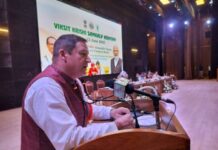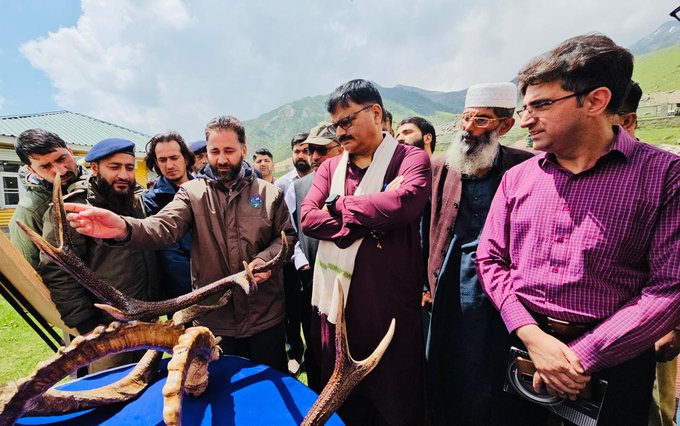MAY 30: Forest, Ecology & Environment Minister Javed Rana recently visited the Hirpora Wildlife Sanctuary in Shopian to conduct an on-ground assessment of the ongoing conservation efforts for the endangered Markhor, a rare and iconic mountain goat species native to the region. His visit aimed to evaluate both the progress of the Markhor revival program and the ecological impact of increased human activity in the sanctuary.
During the visit, the Minister reviewed habitat restoration measures and wildlife monitoring strategies being implemented under the state’s conservation agenda. Forest and wildlife officials briefed him on the steps taken to protect the Markhor from threats such as poaching, habitat encroachment, and food scarcity due to competition with livestock.
A significant part of the review focused on the impact of livestock grazing by non-traditional migratory herders who have been moving into the region in growing numbers. These activities, it was observed, are putting additional pressure on the fragile alpine ecosystem, leading to habitat degradation and disturbances to the Markhor’s natural behavior and breeding cycles.
Minister Rana expressed concern over these developments and stressed the need for a balanced approach that protects both the wildlife and the livelihoods of local communities. He directed the concerned departments to conduct scientific impact assessments and explore sustainable grazing policies that limit ecological damage while supporting pastoralist traditions.
He further emphasized the importance of community participation in conservation and called for enhanced awareness programs for herders and local residents. “The Markhor is not just a symbol of our natural heritage, but also a barometer of the health of our mountain ecosystems,” the Minister remarked, underlining the government’s commitment to biodiversity preservation.
Minister Rana also called for increased patrolling, surveillance, and the use of technology such as camera traps and GPS tracking to monitor both wildlife and human activity within the sanctuary.
The visit reflects the government’s proactive approach to environmental stewardship and wildlife protection. As conservation becomes an urgent necessity in the face of climate change and human expansion, efforts like these signal a strong policy direction toward ecological sustainability and responsible coexistence.


















